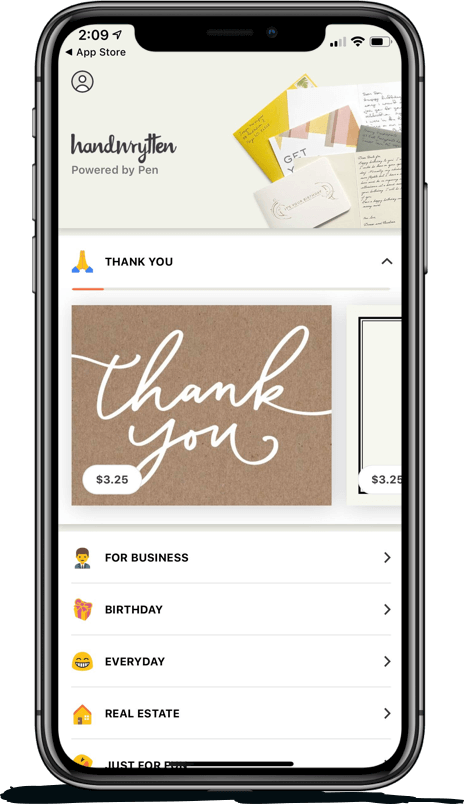
9280 S. Kyrene Rd.
Suite 134
Tempe, AZ 85284
Phone: +1 (888) 284-5197
Email: contact@handwrytten.com



You have been subscribed. Thank you!
The COVID-19 pandemic caused many businesses to move their operations online. In the interests of social distancing and public health, meetings that were once held face to face were conducted via outlets like Zoom instead.
Now, as vaccines are rolled out, and people start returning to offices, both individuals and companies are struggling to navigate the “new normal.” Many businesses are having trouble convincing employees who got comfortable working from home to return to on-site locations.
Meanwhile, workers report having mixed feelings. Some are excited to see colleagues again, while others would prefer working from the living room couch. The great news is that everybody has the opportunity to rethink their relationship with the office and their professional interactions.
Ultimately, the “shake up” of the coronavirus pandemic can help people find healthier and happier ways to work. That said, whatever your meeting preferences post-COVID are, you must communicate them yet diplomatically. Meetings, in particular, can be a touchy topic.
This guide explains how to communicate your meeting preferences post COVID-19.
Taking personal responsibility over how, when, where, and who you meet post-COVID is perfectly acceptable. However, the way you communicate your personal preferences can make a big difference in how well they are received by the other parties involved. Remember, business success relies largely on positive relationships. It’s important to tread lightly.
Follow these 12 steps to ensure a seamless communication process.
Before communicating your meeting preferences post COVID-19 to other people, you have to define them clearly. Many people aren’t yet comfortable meeting face to face, even if they are vaccinated. Given the uncertainty surrounding COVID-19 in general and new variants in particular, this is perfectly understandable.
If you fall into this camp of people, you may want to avoid in-person meetings. However, you must come up with a feasible alternative. What would you be comfortable with? The type of work you do will likely impact the answer. For some jobs, simple communication via email or chat app may be sufficient. For others, videoconferencing may be more productive.
Whatever preferences you have concerning post-COVID meetings, you may be asked to justify them. Write down a few bullet points explaining your point of view. For example, if you have a family member who hasn’t been vaccinated yet, this could be a compelling reason to avoid in-person interactions.
Take the time to write your reasons down. This will help you formulate your thoughts clearly and avoid confusion—and potential miscommunication—when the time comes to discuss the topic with others.
Once you’ve decided exactly how you prefer to conduct meetings in the post-COVID environment, consider the other side of the equation. What arguments might people make against your proposed meeting plan? Considering the counter-arguments in advance will help you prepare your rebuttal.
For example, say you believe that you can complete your job adequately with communication solely via a chat app and project management tool. A colleague may find this an insufficient collaboration tool. You can prepare for this line of thought by proposing video meetings as a compromise. Line up your arguments now.
If you don’t want to engage in face-to-face meetings, it’s critical to present your alternative. Don’t just say, “I think we could meet our objectives using a project management tool.” Instead, try something like, “With the Asana project management tool, we can assign tasks, set deadlines, and engage in project-specific chats to connect as needed.”
The more detail you can provide, the better. Further, be prepared to address the technical side of things. For example, if you want to run all future meetings through Zoom, provide a quick “how-to” guide and include a link to downloading Zoom. This may be useful for less tech-savvy, older colleagues.
Whatever alternatives you propose to traditional in-person meetings, make sure they work. Take the time to test-run any tools you are offering. If you want to use Zoom, for example, try out your video conferencing equipment.
You don’t want fuzzy visuals or bad audio to interfere with a meeting’s success. You will then quickly lose ground in your argument for non-personal meetings not being necessary. The aim is to prove that your alternative is just as effective as face-to-face interaction.
You now have everything you need to communicate your meeting preferences post COVID-19 to the relevant persons. First, decide who to talk to. You may need to update bosses, coworkers, employees, and clients.
Note that you may need to write one draft of your communication and then tweak it according to the target audience. For example, the tone you use with a client may differ from the tone you would use with a colleague or employee.
Next, draft your communication. Make sure to cover all of the points discussed above in your writing. You should:
The aim is to give the recipient as much information as possible to have no questions or confusion. You want to make it easy for them to say “yes” to your desired meeting preference.
It’s best to communicate your meeting preferences post-COVID in writing. This will ensure the most clarity and allow you to get to the point succinctly. Email is an excellent way to go. Prepare for the potential reply you will get.
If you get pushback, point to the compromise options you have provided. Hopefully, you will be able to negotiate a means of meeting that fits your preferences as well as the other party’s. Everybody should be comfortable with the outcome.
Once you come up with a fitting solution for managing future business meetings, write it down. Send a final confirmation email with all the details of how you will conduct future interactions. Again, this is a good time to reiterate technicalities, like where people can download the technology they need.
It can be helpful to automate meeting preferences using a digital calendar tool. For example, if you plan to have a biweekly Zoom conference, send a regular calendar invite that includes a link to the Zoom meeting space, plus any other relevant login details. This ensures everybody is on the same page.
As you and your colleagues and clients adapt to new meeting styles, make an effort to ensure that everything runs smoothly. Since you were the person to request a change to the usual state of affairs, it’s your responsibility to avoid roadblocks.
Otherwise, you may find people no longer wanting to accommodate your business preferences.
Take video conferencing, for example. In addition to ensuring that everything runs smoothly technically, you want to manage these meetings effectively. Give clear directives for when and how people should mute their microphones, coordinate who talks when, and minimize interruptions.
Everyone will have their meeting preferences post COVID-19. Be patient and keep an open attitude as you and your fellow professionals and clients adjust to the “new normal.” Keep in mind that everybody is navigating this unfamiliar territory together.
It may be that you will have to adjust your preferences on occasion to accommodate another individual’s needs. Keep an open mind and consider other people’s reasoning for adjustments. They may be valid!
Similarly, recognize the people that are willing to adapt to your needs. Following up with a thank you note can be a great way to show gratitude and improve your business relationships. Automated mailing tools can simplify the process of sending thank you notes.
With Handwrytten, you can send handwritten notes easily. You type in your message and the team at Handwrytten uses custom-designed robots to write it out (you can even choose the handwriting style)! They’ll even stamp and deliver the letter for you.
The business world has evolved significantly due to the COVID-19 pandemic. Remote work is on the rise, for example, while companies are accelerating the rate at which they adopt digital innovation. The way you navigate this change will determine your future business success.
Finding innovative ways to collaborate with colleagues and clients will likely benefit you in the big picture. However, keep in mind that not everybody may be on the same page as you. Some colleagues may shy away from cutting-edge tech, for example.
It’s your responsibility to take the time to carefully communicate your meeting preferences and explain how your professional counterparts can accommodate them.


Scale your handwritten outreach, creating positive impressions and long lasting bond.
Sign Up Today!


Over 100 designs to choose from or design your own. Our online card customizer makes it simple.
Check Out Our Cards!





